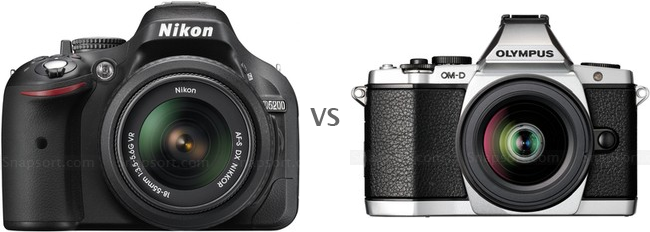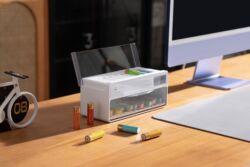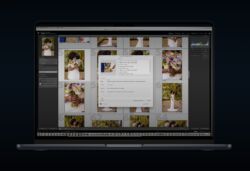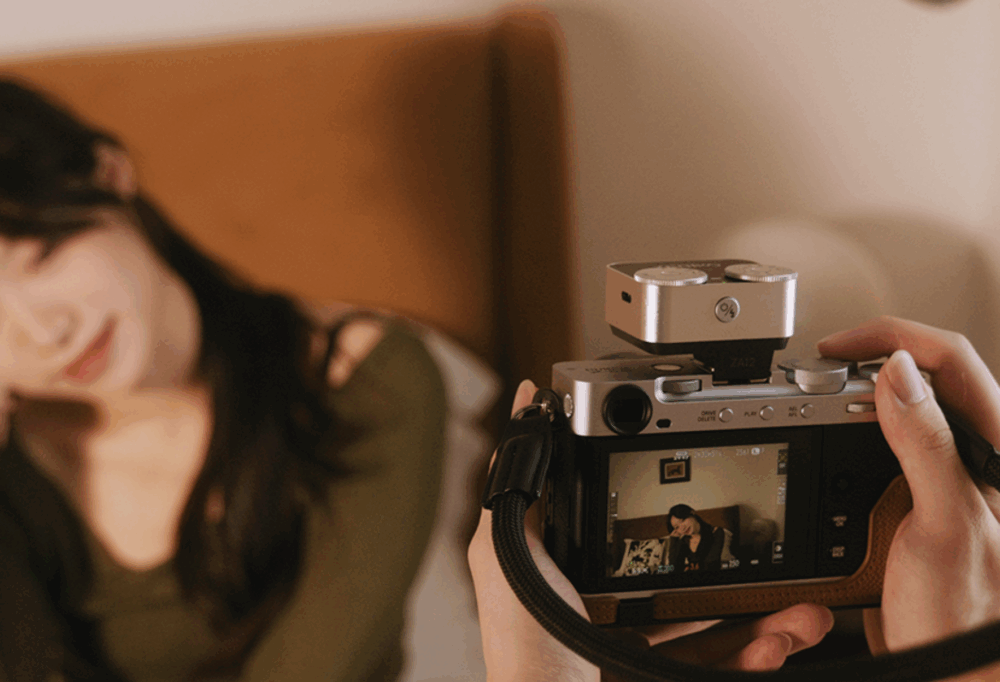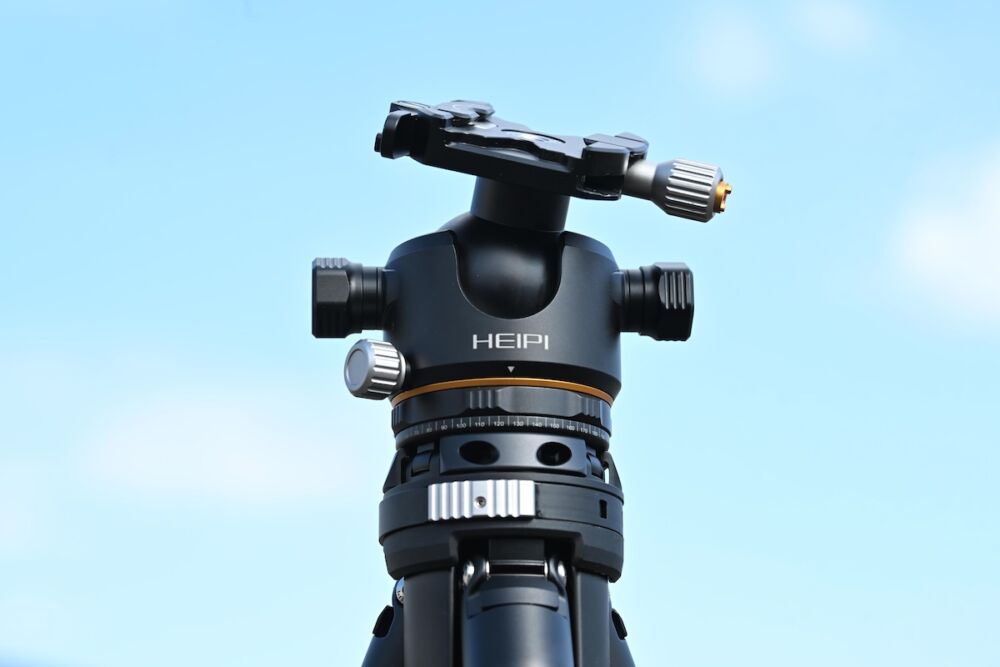The DSLR has been with us for quite a while now. It’s seen some innovations during its lifetime but for the most part, DSLR’s haven’t changed a great deal. Sensors have advanced, auto focus has gotten better and, of course, video was introduced in 2008 with the Nikon D90 – the same year that Olympus and Panasonic introduced the Micro Four Thirds format.
Sony has pushed the envelope somewhat with their translucent mirror technology, creating quite a unique product, but its fundamentally the same design with slightly different technology under the hood.
Micro Four Thirds (m43 from here on) is a relatively new format, but has been at the absolute forefront of technology since it’s introduction and has carved its way through a seemingly impossible road to become a format that many consider equal to, and in some cases, better than the standard DSLR.
Let’s take a look below at some of the main differences between DSLR’s and Micro Four Third system cameras, and some of the main advantages and disadvantages for both.
1. Viewfinders
Some people swear by an optical viewfinder, the type found in a traditional DSLR, like the Canon 5D and the Nikon D800, whilst others enjoy the instant feedback from a EVF or electronic viewfinder. I have no doubt that the optical view finder will become the niche as technology creates better EVF’s with faster refresh rates and higher dynamic range. Some cameras even have both. As with optical viewfinders, not all EVF’s are built equal. The viewfinder found in cameras like the Sony A99 and Olympus OM-D EM-1, for example, are truly fantastic and are actually converting people from optical to electronic. They are that good.

Top of the range EVF’s allow you to see things that the naked eye simply can’t. You can see into the dark. When you make adjustments to your camera settings, you can see them in real time, through the viewfinder. You can choose to have overlays on so you can see your histogram, amongst other things, whilst taking your photos. You can also see the picture immediately after taking it without taking your eye away from the camera. Great on sunny days. If you’re a fan of manual focusing, an EVF is your best friend too, as it allows you to magnify your view and very clearly see what you’re focusing on, all in real time.
 An optical viewfinder is very organic, it has a natural, familiar feel for some. An optical viewfinder on a full frame camera like the Nikon D800 gives you a 100% field of view and a much nicer experience than some entry level DSLRs. Some of these can feel like you’re looking through a tunnel sometimes. By their very nature, optical view finders cannot display the amount of information an EVF can, which you may prefer, but at least you can turn it off on an EVF. You cannot turn it on or off with an optical view finder.
An optical viewfinder is very organic, it has a natural, familiar feel for some. An optical viewfinder on a full frame camera like the Nikon D800 gives you a 100% field of view and a much nicer experience than some entry level DSLRs. Some of these can feel like you’re looking through a tunnel sometimes. By their very nature, optical view finders cannot display the amount of information an EVF can, which you may prefer, but at least you can turn it off on an EVF. You cannot turn it on or off with an optical view finder.
2. Auto Focus
This used to be one of the biggest differences between a traditional DSLR and m43 system cameras, but it’s not as big as you might think anymore. A DSLR uses ‘Phase Detect Auto Focus’ whereas the latest m43 and mirror-less cameras are now using a combination of Phase Detect and Contrast Detect auto focus.
- Phase-detect Autofocus uses a dedicated sensor that splits the light into two images and focuses them until the two images come together on the focus sensor. This sensor then measures how far apart the two images are, knows which direction to focus and is faster than contrast-detect auto focus.
- Contrast-detect Autofocus uses the actual image sensor and tells the camera to keep changing focus until the contrast from one pixel to the next is the highest possible. The camera doesn’t know which way to focus, so it is generally slower and not well-suited for action photography, when the subject is moving in different directions. Contrast-detect can be more accurate than phase-detect, just a bit slower generally.

With cameras like the Olympus OM-D EM-1, Panasonic GX7 and Fuji XE-2, you now get a combination of both. Each manufacturer implements this in their own way, but it effectively means we are now seeing auto focus on the higher end m43 cameras that can keep up with all but the most demanding of sports. For a professional sports photographer then, a DSLR is probably still the best choice, but there are other elements that also come into play too, portability and size being two of them.
Things like live view and face detect auto focus has generally been more capable on a m43 camera due to the way it uses contrast-detect based auto focus. The recently released Canon 70D DSLR though, put an end to this with it’s dual pixel auto focus system, which actually performs better than most m43 systems. Sony is also very good at live view auto focus due to it’s translucent mirror.
3. Size
Size and weight play a big part in choosing a DSLR or m43 camera. The m43 bodies are considerably smaller than a DSLR of equal quality. Carrying a backup is much less of a chore too, but it’s not just the size of the body but also the lenses. This is where the real differences can mount up. As an example, a 600mm telephoto lens for a DSLR is quite a specialist lens, it’s absolutely huge and takes some extreme dedication to carry around and actually use, requiring a large tripod.
 On the flip side, both Olympus and Panasonic make a 300mm zoom which is the equivalent field of view as a 600mm on a full frame DSLR and you can fit this in your lunch box. It still takes proper technique to get the most out of it, but it’s a lens you could take with you anywhere..
On the flip side, both Olympus and Panasonic make a 300mm zoom which is the equivalent field of view as a 600mm on a full frame DSLR and you can fit this in your lunch box. It still takes proper technique to get the most out of it, but it’s a lens you could take with you anywhere..
You can carry a full selection of lenses and several m43 bodies in a very small bag, light weight and hassle free. Even if you buy a smaller APS-C size DSLR like the Canon Rebel line or Nikon D3200, for example, the lenses are still considerably larger and you are not gaining anything in image quality until you step up to a full frame sensor. If you do a lot of travel, a m43 system could fit the bill perfectly.
 4. Lenses
4. Lenses
Many consider the selection of lenses available for the m43 system to be among the very finest. From manual prime lenses to f2.8 pro zooms and everything in between, you’re pretty much guaranteed to find something suitable.
Fast prime lenses are small and light weight for m43. Fast prime lenses for DSLR’s of equal quality are not light and are generally more expensive. However, they both produce fantastic images in the right hands. Let’s take a quick look at a typical prime lens kit a professional might use and the cost involved below (all prices are approx. and subject to change):

5. Cost
As you can see above there is a considerable difference in cost between the two systems, but very little difference in actual real world use. If you are shooting with a top of the range full frame DSLR with the lenses above for commercial clients and print in large formats, then you may see an advantage.
 The image here was taken in Paris with the Panasonic GH3 and the 12-35mm f2.8 lens. I’ve processed it in Lightroom and the results are not lacking in my view. Plenty of dynamic range to pull out the highlights and shadows. This was not a HDR image. The point I’m making is: you might not need to spend thousands to get the results you need, especially with some good post processing.
The image here was taken in Paris with the Panasonic GH3 and the 12-35mm f2.8 lens. I’ve processed it in Lightroom and the results are not lacking in my view. Plenty of dynamic range to pull out the highlights and shadows. This was not a HDR image. The point I’m making is: you might not need to spend thousands to get the results you need, especially with some good post processing.
6. Weight
Being able to carry your kit with you and hardly notice is a big thing. It can allow you to feel more free, this generally leads to a happier shooting experience, which will likely mean better photos. Your happiness will shine through your images and you will attract more opportunities into your life that allow you to make better photos. Lugging around 15kgs (around 33lbs) of kit is not much fun. Especially, if you don’t need to.
Looking at the above dream kit for your full frame DSLR, how many of you can honestly say that you’d have it with you on a daily basis? I can’t tell you how many shots I’ve missed in the past because my kit was in the bag, tucked up safely until my next ‘big’ gig. If it’s smaller and lighter, I find it’s more likely to be with me, ready to use.
I find friends and family enjoy using a m43’s camera a bit more too. People I wouldn’t consider photographers have a much easier time with m43 cameras as they are simply easier to use. They are not as intimidating either, I’ve actually got some photos of me with the kids rather than ten thousand of my wife with the kids.
Things like eye and face detection actually help on some occasions. For people less familiar with certain techniques, these can prove to work well. At this moment in time, the majority of traditional DSLR’s cannot do effective face detect as they do not have contrast-based auto focus.
7. Sensors
Sensor size and the impact it has on your images can vary a great deal. A full frame sensor is based off of the 35mm film days, APS-C has a crop factor of 1.6 and m43 sensors have a crop factor of 2, when compared to full frame.
The image below shows the different sensor sizes:
 The sensor also affects your field of view and focal length. These days, full frame 35mm sensors are considered the standard that all other sensor sizes are compared to, simply because it’s the familiar size from the 35mm film days and has been with us for many years. Lenses designed originally for this field of view don’t have a crop factor.
The sensor also affects your field of view and focal length. These days, full frame 35mm sensors are considered the standard that all other sensor sizes are compared to, simply because it’s the familiar size from the 35mm film days and has been with us for many years. Lenses designed originally for this field of view don’t have a crop factor.
So, when looking at a m43 sensor we generally compare it to a full frame 35mm sensor, which equates to focal length and depth of field being multiplied by two. If this sounds a bit confusing, it’s actually quite simple when you break it down.
As an example, take a 25mm f1.4 lens like the Panasonic/Leica option. It lets in the same amount of light as a f1.4 lens on a full frame body. This never changes, but the sensor is two times smaller. The focal length and aperture are also multiplied by two, effectively giving you, what looks like a 50mm f2.8 lens when compared to a full frame camera.
You may also notice a bit more dynamic range with a larger sensor, but this isn’t always the case – as demonstrated in the above Paris shot. Would the picture have looked better if I had taken it with a Nikon D800 and 24-70mm? Maybe would it be noticeable, probably not, unless you are printing a massive size or zooming in 300%.
8. Depth of Field
A m43 camera gives you less depth of field at the same focal lengths when compared to a 35mm sensor, less ‘bokeh’ or out of focus backgrounds. But how much ‘bokeh’ do we really need? Most studio portraits are shot between f5.6 and f8, that would be f2.8 or f4 on your m43 camera allowing you to have smaller, less powerful strobes. Depending on what/how you shoot this has it’s advantages and disadvantages. The below shot was taken with a Panasonic GH3, 12-35 f2.8 at 35mm and has plenty of ‘bokeh’.

On a m43 camera you can stay at f1.8, letting a load of light in, but still get your subjects face in focus rather than just their eye lashes. This allows for a faster shutter speed and/or lower ISO’s. If you take a landscape photo, you can be at f8 instead of f16 and see the same results with everything in focus, again letting in a lot more light, keeping the shutter speed higher or using lower ISO settings.
Full frame lenses at f1.2 will give you a very unique look indeed, a look that a lot people love. I enjoy a good dollop of bokeh as much as the next guy, but I’m also aware of how to use it. There is so much more to bokeh than just shooting a full frame camera at f1.2. Focal lengths, composition, subject matter and light all play a big part in this, and each system can achieve the coveted shallow depth of field if you know how these elements work together. The two images below demonstrate more bokeh than you can shake a stick at. The left image was taken with the Olympus EM-5 45mm f1.8 at 1.8 the right one was with the Canon 5D3 and 24-105mm at 105mm and f4.
 9. Range
9. Range
It’s huge for both m43 and DSLR systems, you can rest assured that whichever system you choose you will not be wanting for anything. We have already covered lenses above, but you can get flashes, filters, bags, battery grips, tripods, light modifiers and a lot more, all geared specifically towards both systems. For such a young system, relatively speaking, m43’s really do offer the photographer a viable alternative to the DSLR, unlike any other system at the moment, although Fuji is getting close.
You can get excellent cameras in both systems from the budget conscious right through to the professional looking for the best of the best. With new cameras like the Olympus OM-D EM-1 blurring the line between what was once strictly Nikon D4 territory, it’s an exciting time to be a photographer.
10. Appearance
You look super cool with the latest silver and black retro designed camera, especially when its housed in a vintage look brown leather man bag! Just kidding, but the m43 cameras like the Panasonic GX7 and Olympus EP-5 are very cool cameras to look at, hold and use. They inspire me to shoot more and have a certain feeling about them which is lacking in most larger DSLR’s. I particularly like the Fuji X series cameras like the XE-2, X-Pro 1 and X100s. Although these are neither a DSLR or a m43 camera, it’s worth mentioning them here as most people will be looking at these alongside the Panasonic and Olympus offerings when looking at this style of camera.
11. Image Quality
These smaller system cameras open up new ways to shoot, they allow you take DSLR quality with you anywhere, with excellent fast prime lenses. They allow you go relatively unnoticed should you wish, but most importantly they deliver the results, they give you image quality that up until recently you could only get with a DSLR!
Where you will notice a difference is in low light. M43 sensors are not the best in low light. They aren’t bad, but a larger sensored DSLR will serve you better if you have to shoot at ISO’s above 1600. Light is 95% of photography though, and I would encourage you to learn how to light your subjects properly and then the high ISO limit becomes less important.  Above shot taken with the Olympus OM-D EM-5 and 45mm f1.8 at 1.8. Plenty of dynamic range with this sensor.
Above shot taken with the Olympus OM-D EM-5 and 45mm f1.8 at 1.8. Plenty of dynamic range with this sensor.
Personally, I can see a difference between m43’s and full frame sensors, albeit small sometimes. With the right lenses, my Canon 5D3 has a depth to the picture that I cannot achieve with any m43 camera to date. It has a 3D like quality and it’s files are much more forgiving. I can push a raw file from my Canon a lot more in post processing should I need to and the new Sony A7r is even better. How important this is to you, depends on the job your shooting. I use each system accordingly.
Conclusion
Ultimately, you can’t really go wrong with either system. They are both capable of producing absolutely stunning results. Much of it boils down to what you are going to use them for.
All you have to do is look at the classic photographs from back in the day. My equipment is more advanced than the cameras they used but the photos they produced are timeless masterpieces that capture so much more than simply pressing the shutter button.
It really is an exciting time to be a photographer.

